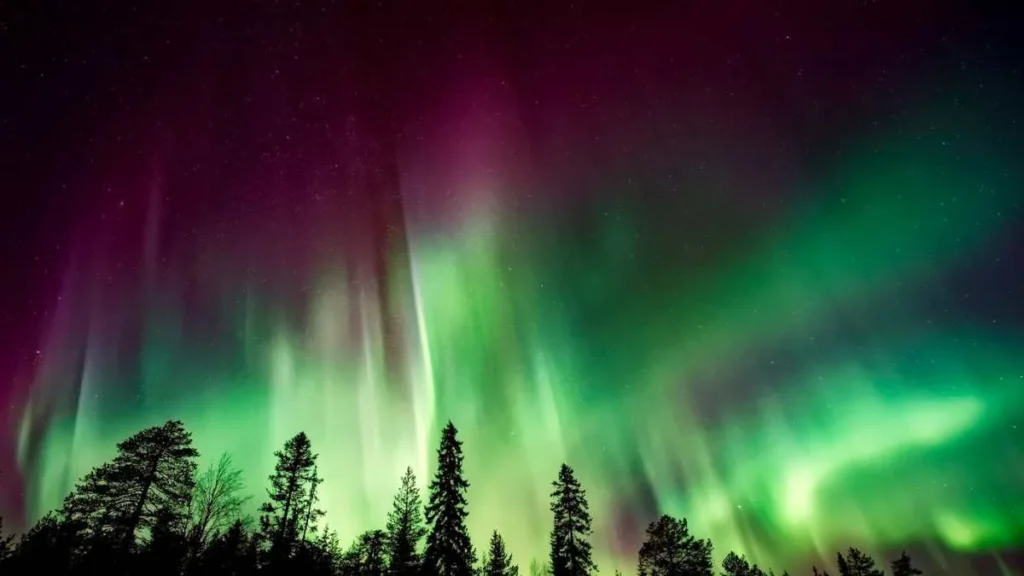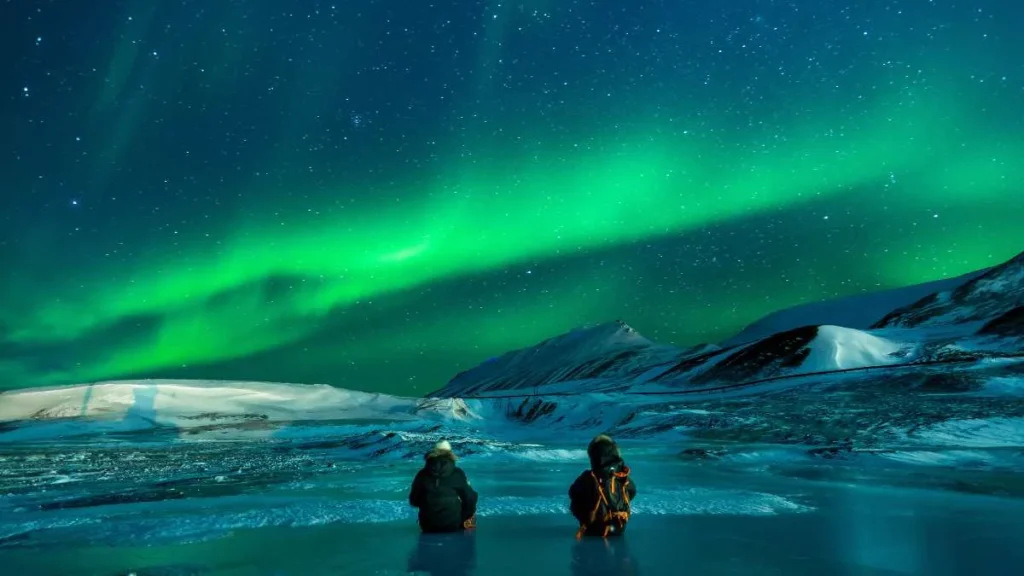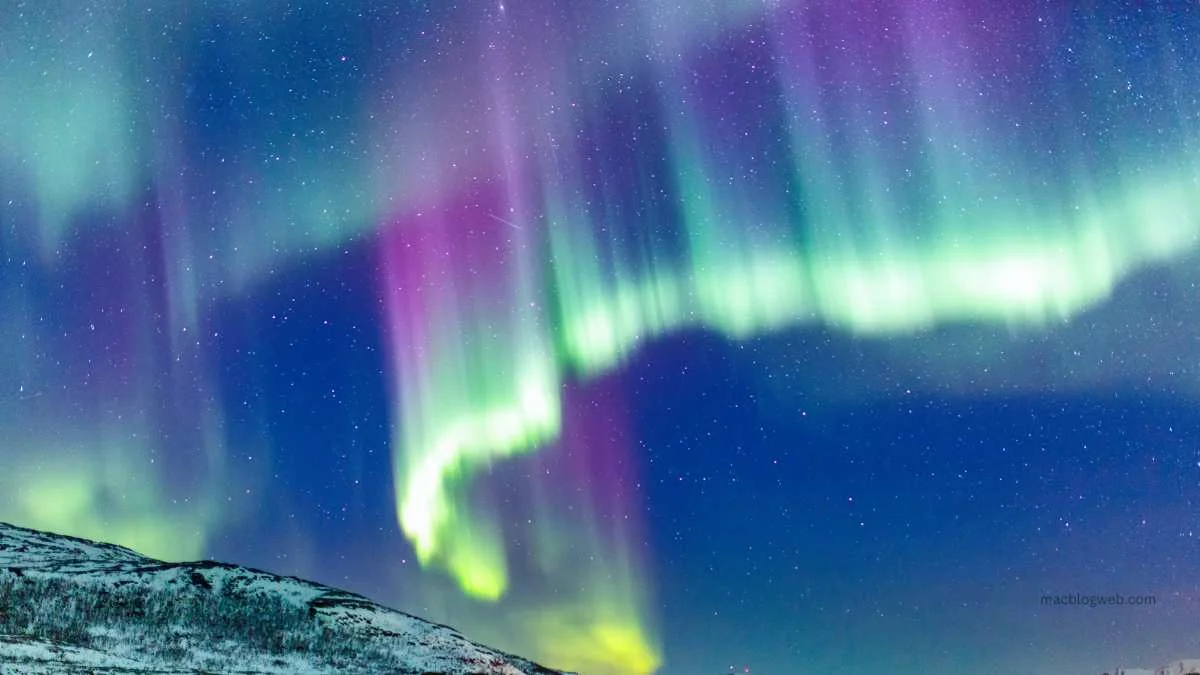The Northern Lights, also known as aurora borealis, have captivated humanity for centuries with their breathtaking display of colors dancing across the night sky. This natural wonder, caused by geomagnetic storms and charged particles from the sun interacting with the Earth’s atmosphere, offers a mesmerizing spectacle that transcends geographical boundaries and cultural divides. In this comprehensive article, we will explore the phenomenon of the Northern Lights, including its scientific underpinnings, recent sightings, and the anticipation it generates among enthusiasts worldwide.
Understanding the Northern Lights: A Natural Phenomenon
The Northern Lights are a result of geomagnetic storms caused by charged particles from the sun colliding with gases in the Earth’s atmosphere. These collisions excite the gases, causing them to emit light of varying colors, ranging from vibrant greens to shimmering pinks and purples. The most common gases involved in this process are nitrogen and oxygen, each contributing distinct hues to the spectacle.

During periods of heightened solar activity, such as solar flares and coronal mass ejections (CMEs), the influx of charged particles intensifies, increasing the likelihood and visibility of the Northern Lights. This phenomenon is particularly pronounced during the solar maximum, a phase in the Sun’s 11-year cycle characterized by increased sunspot activity and CMEs. As a result, regions closer to the Earth’s poles, where geomagnetic activity is more concentrated, often witness the most spectacular displays of the aurora borealis.
Recent Sightings and Geomagnetic Storms
Excitement soared among skywatchers as reports of recent Northern Lights sightings spread across the globe. One of the strongest geomagnetic storms in years, classified as a G5 event, illuminated the skies with dazzling auroras visible even in regions far south of their typical range. From the south coast of England to the northern reaches of Scandinavia, eager observers marveled at the celestial spectacle, capturing its ephemeral beauty through photographs and videos.

The extreme geomagnetic storm that occurred on Friday drew attention from scientists and enthusiasts alike, with the US National Oceanic and Atmospheric Administration (NOAA) issuing a rare solar storm warning. While such storms enhance the likelihood of witnessing the Northern Lights, they also raise concerns about potential impacts on infrastructure, including satellites and power grids. Despite the heightened geomagnetic activity, reports of significant disruptions have been scarce, underscoring the resilience of modern systems in mitigating the effects of space weather events.
Scientific Insights and Forecasting Auroral Activity
Professionals in the fields of astronomy and space weather monitoring play a crucial role in predicting and interpreting auroral activity. Through advanced satellite observations and modeling techniques, scientists can anticipate geomagnetic storms and assess their potential impact on Earth’s magnetic field. This predictive capability enables enthusiasts to plan their skywatching expeditions and maximize their chances of witnessing the Northern Lights in all their splendor.
Furthermore, advancements in technology, such as smartphone cameras and online aurora trackers, have democratized the experience of observing the aurora borealis. Enthusiasts no longer need specialized equipment or extensive knowledge of astronomy to capture stunning images of the Northern Lights. Instead, they can rely on user-friendly apps and websites that provide real-time updates on geomagnetic activity and auroral forecasts, empowering individuals to engage with this natural phenomenon on a more personal level.

Cultural Significance and Global Appeal
The Northern Lights captivate not only for their scientific importance but also for their cultural, artistic, and spiritual impact. For indigenous communities in areas where the aurora borealis is a common sight, these stunning displays carry profound cultural meaning, often inspiring myths, legends, and ceremonies. Throughout history, artists, poets, and storytellers have found inspiration in the ethereal beauty of the lights, incorporating their mesmerizing imagery into literature, music, and visual art.

Moreover, the global appeal of the Northern Lights transcends cultural boundaries, attracting travelers from around the world to witness this natural spectacle firsthand. Whether trekking to remote Arctic regions or seeking vantage points with clear, dark skies, enthusiasts embark on pilgrimages in pursuit of the aurora borealis, forging connections with nature and fellow admirers along the way. In an age marked by rapid technological advancements and urbanization, the timeless allure of the Northern Lights serves as a reminder of humanity’s enduring fascination with the wonders of the natural world.
Conclusion
The Northern Lights, with their shimmering hues and celestial dance, continue to captivate and inspire individuals worldwide. As recent sightings and geomagnetic storms remind us of nature’s awe-inspiring power, we are reminded of the importance of preserving and cherishing our planet’s natural wonders. Whether viewed from the Arctic Circle or unexpected locales far south of their typical range, the Northern Lights serve as a testament to the beauty, mystery, and resilience of our planet’s delicate ecosystem. In the face of an ever-changing world, the ethereal glow of the aurora borealis remains a beacon of hope, inviting us to gaze skyward and marvel at the wonders of the cosmos.








